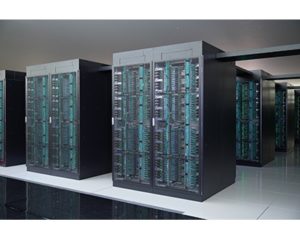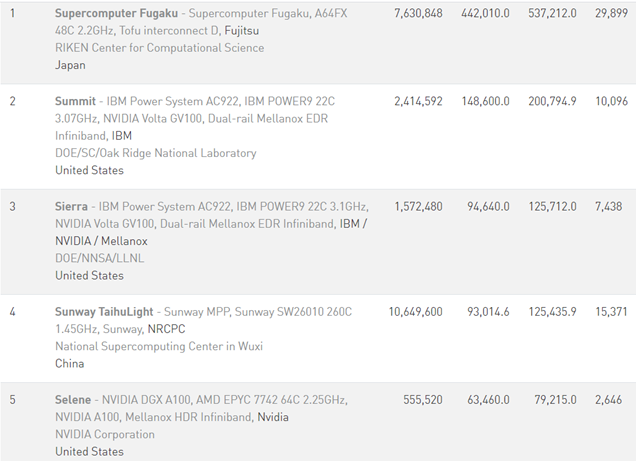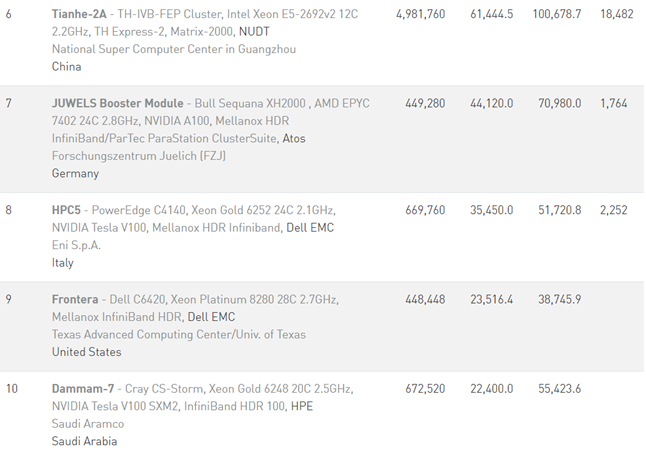 The Arm-based Fugaku supercomputer, residing at the Riken Center for Computational Science in Japan, solidified the lead it seized in June atop the Top500 list of the world’s most powerful supercomputers. Announced today at virtual SC20, the 56th edition of the bi-annual list reflects a “flattening performance growth curve,” according to the organizations, which said that “although two new systems managed to make it into the top 10, the full list recorded the smallest number of new entries since the project began in 1993.”
The Arm-based Fugaku supercomputer, residing at the Riken Center for Computational Science in Japan, solidified the lead it seized in June atop the Top500 list of the world’s most powerful supercomputers. Announced today at virtual SC20, the 56th edition of the bi-annual list reflects a “flattening performance growth curve,” according to the organizations, which said that “although two new systems managed to make it into the top 10, the full list recorded the smallest number of new entries since the project began in 1993.”
Thanks to additional hardware, Fugaku grew its HPL performance to 442 petaflops, a modest increase from the 416 petaflops the system achieved when it debuted last June. More significantly, Fugaku increased its performance on the new mixed precision HPC-AI benchmark to 2.0 exaflops, besting its 1.4 exaflops mark recorded six months ago. In its announcement, Top500 said Fugaku is the only systems to achieve benchmark measurements above one exaflop “for any precision on any type of hardware.”
Here is a rundown of the top 10 systems:
- Fugaku remains at the top spot, growing its Arm A64FX capacity from 7,299,072 cores to 7,630,848 cores. The additional hardware enabled its new world record 442 petaflops result on the High Performance Linpack (HPL) benchmark. This puts it three times ahead of the number two system in the list.
- No. 2 on the list, Summit, is an IBM-built system at the Oak Ridge National Laboratory (ORNL) in Tennessee, remains the fastest system in the US with a performance of 148.8 petaflops. Summit has 4,356 nodes, each one housing two 22-core IBM Power9 CPUs and six Nvidia Tesla V100 GPUs.
-

Fugaku supercomputer at Riken
Sierra, at the Lawrence Livermore National Laboratory in California, is ranked third with an HPL mark of 94.6 petaflops. Its architecture is very similar to that of Summit, with each of its 4,320 nodes equipped with two IBM Power9 CPUs and four Nvidia Tesla V100 GPUs.
- Sunway TaihuLight, a system developed by China’s National Research Center of Parallel Computer Engineering & Technology (NRCPC) and installed at the National Supercomputing Center in Wuxi, is listed at number four. It is powered exclusively by Sunway SW26010 processors and achieves 93 petaflops on HPL.
- At number five is Selene, an Nvidia DGX A100 SuperPOD installed in-house at Nbvidia Corp. It was listed as number seven in June but has doubled in size, allowing it to move up the list by two positions. The system is based on AMD EPYC processors with Nvidia’s new A100 GPUs for acceleration. Selene achieved 63.4 petaflops on HPL as a result of the upgrade.
- Tianhe-2A (Milky Way-2A), developed by China’s National University of Defense Technology (NUDT) and deployed at the National Supercomputer Center in Guangzho, is ranked 6th. It is powered by Intel Xeon CPUs and NUDT’s Matrix-2000 DSP accelerators and achieves 61.4 petaflops on HPL.
- A new supercomputer, known as the JUWELS Booster Module, debuts at number seven. The Atos-built BullSequana machine was recently installed at the Forschungszentrum Jülich (FZJ) in Germany. It is part of a modular system architecture and a second Xeon-based JUWELS Module is listed separately on the TOP500 at position 44. These modules are integrated by using the ParTec Modulo Cluster Software Suite. The Booster Module uses AMD EPYC processors with NVIDIA A100 GPUs for acceleration similar to the number five Selene system. Running by itself the JUWELS Booster Module was able to achieve 44.1 HPL petaflops, which makes it the most powerful system in Europe
- HPC5, a Dell PowerEdge system installed by the Italian company Eni S.p.A., is ranked 8th. It achieves a performance of 35.5 petaflops using Intel Xeon Gold CPUs and Nvidia Tesla V100 GPUs. It is the most powerful system in the list used for commercial purposes at a customer site.
- Frontera, a Dell C6420 system, installed at the Texas Advanced Computing Center at the University of Texas last year, is now listed at number nine. It achieves 23.5 petaflops using 448,448 Intel Platinum Xeon cores.
- The second new system at the top of the list is Dammam-7, which is ranked 10th. It is installed at Saudi Aramco in Saudi Arabia and is the second commercial supercomputer in the current top 10. The HPE Cray CS-Storm systems uses Intel Gold Xeon CPUs and Nvidia Tesla V100 GPUs. It reached 22.4 petaflops on the HPL benchmark.
Top500 said the entry level to the list moved up to 1.32 petaflops on the HPL, a small increase from 1.23 petaflops in the June rankings. In a similar vein, the aggregate performance of all 500 systems grew from 2.22 exaflops in June to just 2.43 exaflops on the latest list. Likewise, average concurrency per system barely increased at all, growing from 145,363 cores six months ago to 145,465 cores in the current list.


source: Top500




